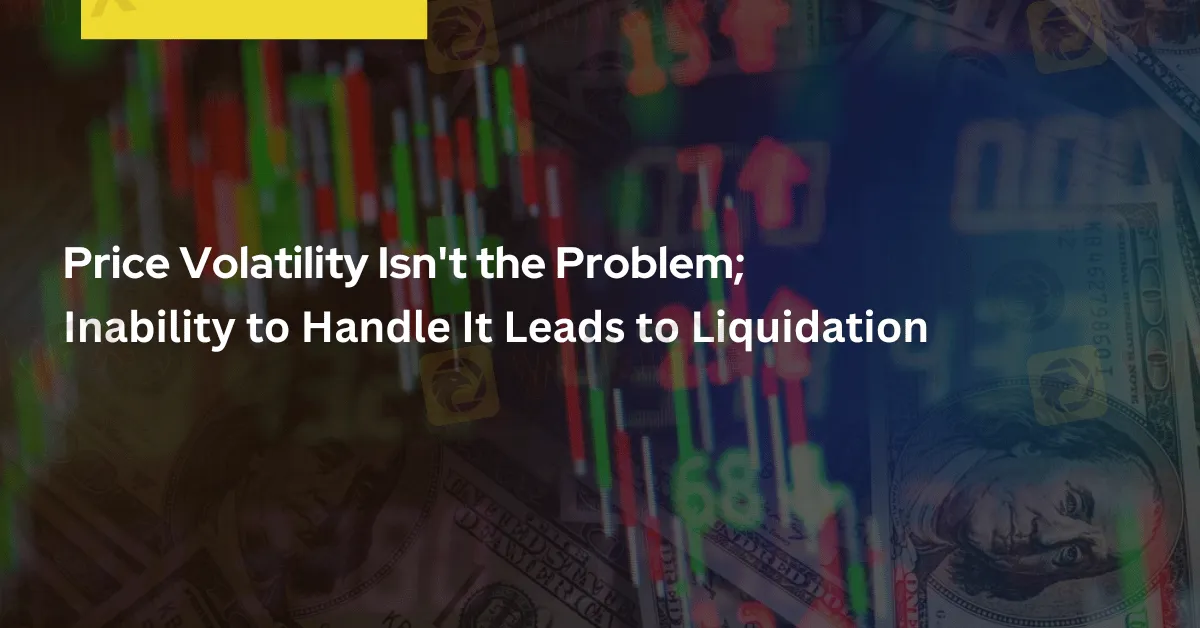简体中文
繁體中文
English
Pусский
日本語
ภาษาไทย
Tiếng Việt
Bahasa Indonesia
Español
हिन्दी
Filippiiniläinen
Français
Deutsch
Português
Türkçe
한국어
العربية
Price Volatility Isn't the Problem; Inability to Handle It Leads to Liquidation
Abstract:This article explores the concept of risk in financial markets, challenging the common perception that price volatility is the primary source of risk. It argues that the real risk lies in an investor's inability to manage and withstand these fluctuations. The discussion focuses on three key factors that determine an investor's ability to handle risk: mindset, capital, and capital management. Emphasizing the importance of proper position sizing, avoiding full margin trading, maintaining reserve funds, and strategically reinvesting profits, the article provides practical guidelines for effective capital management. It concludes that understanding and applying these principles is crucial for long-term success and sustainability in trading.

Many people understand that the market carries risks, but most recognize risk primarily as price volatility. Most people believe that price fluctuations, if judged incorrectly, lead to losses. However, consider an extreme scenario where you can withstand all price fluctuations. Does this mean that such volatility isn't a risk but a manageable cost for you?
In my opinion, the market's risk isn't primarily due to price volatility itself. Everyone in the market knows that prices either rise or fall. The real risk comes from being unable to bear these price fluctuations. Simply put, the risk arises because you can't afford to lose.

Whether you can afford to lose depends on three factors: your mindset, your capital, and how you manage that capital.
Mindset: This is subjective and varies with each person's character and experience.
Capital: This is a relative concept and hard to measure.
Capital Management: This is universally applicable and worth focusing on.
Capital management isn't a fixed rule. Every investor aiming for long-term success should find a suitable capital management method. Here are some general guidelines:
Reasonable Position Sizing
Pyramid Position Sizing: Building your entire position at one price level is a mistake and dangerous. Instead, decide how many lots you want to buy. For instance, if you plan to buy 200 lots, start by buying 80 lots at a low price. If the price rises, buy 60 more lots, and if it continues to rise, buy another 40 lots. Observe the performance and, if it remains positive, buy the final 20 lots. Each follow-up purchase should be at a higher price than the previous one. The same rule applies to short selling, where each sell should be at a lower price than the previous one.
Avoid Full Margin Trading
Many investors see high leverage as beneficial, as it magnifies the capital's efficiency. However, the risk is equally magnified, making full margin trading highly likely to result in significant losses. Diversifying investments increases the chances of winning. Consider different trading systems and analysis methods, each with varying success rates, to reduce the risk of loss. Remember, trading is about probabilities, not certainties. Even a 99% success rate has a 1% chance of failure, and that 1% could be disastrous.
Before trading, establish a clear stop-loss point. Never let losses exceed 10% of your total investment. If you lose 10%, recovering it with the remaining 90% is relatively easy. But losing 30%, 40%, or more makes recovery very difficult. Smaller losses mean easier recovery, whereas larger losses exponentially increase the difficulty of making a comeback.
Reserve Funds
A successful trader must always have reserve funds. Just like a good general always has reinforcements ready, reserve funds should be kept in the bank. This prevents total liquidation and bankruptcy.
Keep Profits in Hand
After making profits, decide whether to reinvest everything or keep some as reserve. While some achieve overnight riches by reinvesting profits, a safer approach is to keep part of the profits as savings. This way, even if the market turns, you have a safety net.
Consider a case where a trader turns a few thousand into millions but doesn't cash out. A market downturn wipes out the gains, bringing the account back to the starting point. If the trader had cashed out even 20% of the profits, they would have secured a substantial gain.
Investors should enter the market with clear goals: to increase capital returns and generate steady profits, not just to speculate and hope for quick riches. The trading market is like a battlefield without smoke; investors should be prepared for long-term combat, not risking everything for short-term gains. Establish a personalized capital management strategy and stick to it. This way, you'll emerge victorious in the long run.
Summary
Price volatility itself isn't the problem; it's the inability to handle it that leads to liquidation. Proper capital management, a resilient mindset, and strategic reserves are essential for long-term success in trading. Follow these principles to manage risks effectively and ensure sustainable profitability in the market.

Disclaimer:
The views in this article only represent the author's personal views, and do not constitute investment advice on this platform. This platform does not guarantee the accuracy, completeness and timeliness of the information in the article, and will not be liable for any loss caused by the use of or reliance on the information in the article.
Read more

Bank Negara Malaysia Flags 12 New Companies for Unauthorised Activity
Bank Negara Malaysia (BNM) has updated its Financial Consumer Alert List (FCA List) by adding 12 more entities, reinforcing its efforts to warn the public against unregulated financial schemes. Check if your broker made the list!

TradingView Brings Live Market Charts to Telegram Users with New Mini App
TradingView has launched a mini app on Telegram, making it easier for users to track market trends, check price movements, and share charts.

March Oil Production Declines: How Is the Market Reacting?
Oil production cuts in March are reshaping the market. Traders are closely watching OPEC+ decisions and supply disruptions, which could impact prices and future production strategies.

How to Calculate Leverage and Margin in the Forex Market
Leverage amplifies both potential profits and risks. Understanding how to calculate leverage and margin helps traders manage risks and avoid forced liquidation.
WikiFX Broker
Latest News
Exposing the Top 5 Scam Brokers of March 2025: A Closer Look by WikiFX
Gold Prices Climb Again – Have Investors Seized the Opportunity?
Webull Launches SMSF Investment Platform with Zero Fees
Australian Regulator Warns of Money Laundering and Fraud Risks in Crypto ATMs
The Withdrawal Trap: How Scam Brokers Lure Victims into Paying More
FCA to Investors: Think Twice Before Trusting These Brokers
Trump\s tariffs: How could they affect the UK and your money
Trump gambles it all on global tariffs he\s wanted for decades
TradingView Brings Live Market Charts to Telegram Users with New Mini App
HTFX Spreads Joy During Eid Charity Event in Jakarta
Currency Calculator







